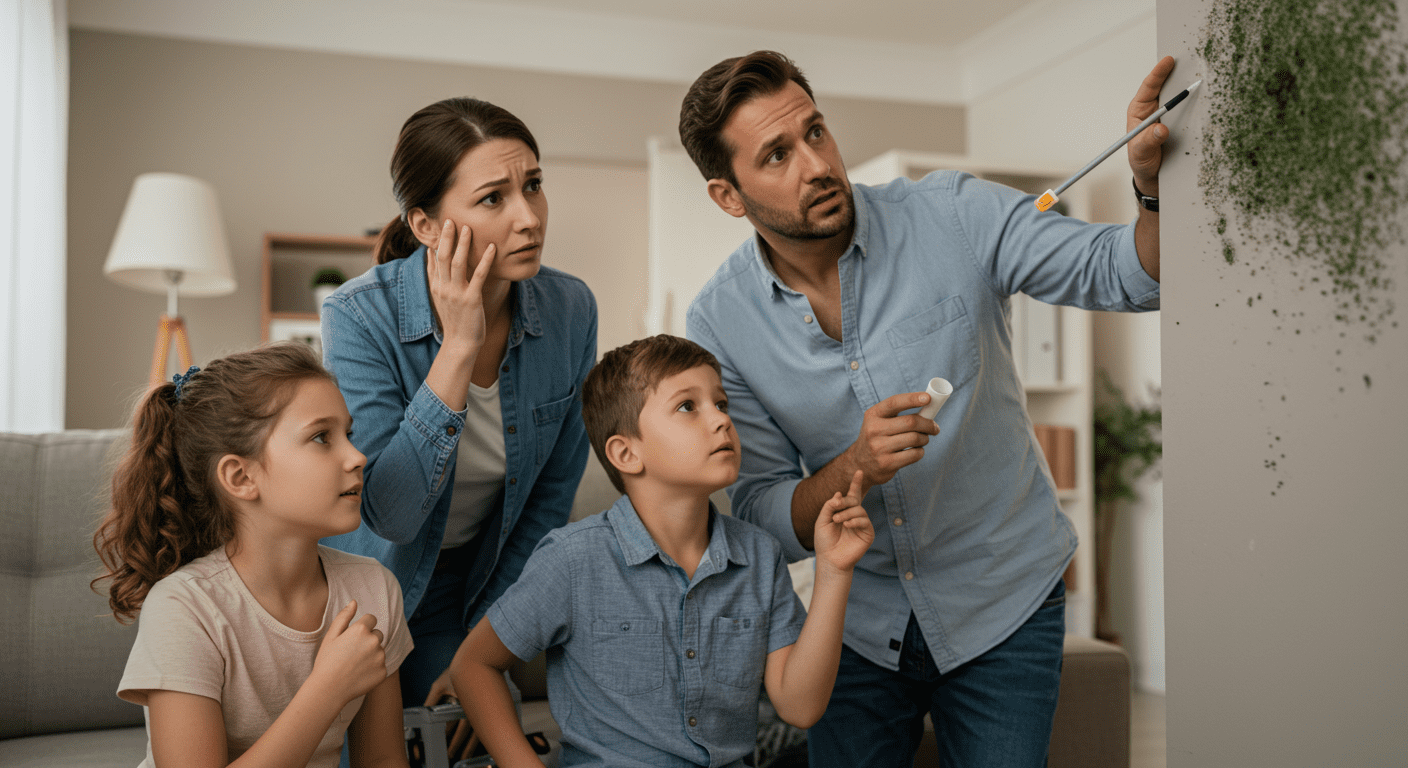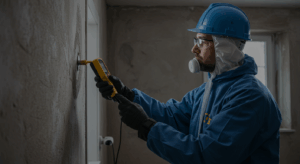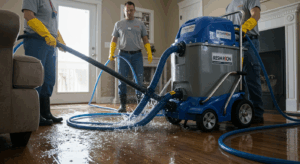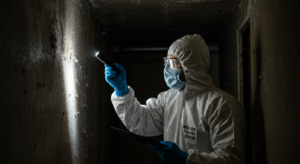Green mold is a common household problem that can pose significant health risks if left untreated. From respiratory issues to structural damage in your home, understanding the dangers of green mold is crucial for maintaining a safe and healthy living environment. In this article, we’ll explore what green mold is, the health risks it presents, how to identify it, and effective strategies for removal and prevention.
What is Green Mold?
Green mold refers to a group of fungi that often appear green due to the pigmentation of their spores. Common types include Aspergillus, Cladosporium, and Penicillium. These molds thrive in damp, humid environments and can grow on a variety of surfaces, including walls, ceilings, and furniture.
Types of Green Mold: Aspergillus, Cladosporium, and Penicillium
Each type of green mold has unique characteristics. Aspergillus is often found in air conditioning systems and can release harmful spores into the air. Cladosporium is commonly seen on wood and textiles, while Penicillium is known for its rapid spread on food and organic materials. Understanding these types can help homeowners identify and address mold issues more effectively.
Common Locations for Growth
Green mold typically grows in areas with high moisture levels, such as bathrooms, kitchens, and basements. Leaky pipes, poor ventilation, and water damage are common culprits that create the perfect breeding ground for mold. Regular inspections of these areas can help in early detection and prevention.
Health Risks Associated with Green Mold
Exposure to green mold can lead to a variety of health issues, ranging from mild allergic reactions to severe respiratory problems. The severity of these risks often depends on the individual’s sensitivity and the extent of mold exposure.
Respiratory Issues and Allergies
Green mold releases spores into the air, which can be inhaled and cause respiratory problems. Symptoms may include coughing, wheezing, and nasal congestion. For individuals with asthma or allergies, exposure can exacerbate symptoms and lead to more severe reactions.
Vulnerable Populations at Risk
Certain groups, such as children, the elderly, and those with compromised immune systems, are particularly vulnerable to the health risks posed by green mold. For these individuals, prolonged exposure can result in chronic respiratory conditions and other serious health complications.
How to Identify Green Mold
Identifying green mold early is essential for minimizing its impact on your health and home. While some signs are visible, others may require professional inspection for accurate detection.
Signs of Infestation
Green mold often appears as fuzzy or slimy patches on walls, ceilings, and other surfaces. It may also emit a musty odor, which is a clear indicator of mold growth. Discoloration and peeling paint are additional signs to watch for.
Importance of Professional Inspection
While DIY methods can help in identifying mold, a professional inspection is recommended for a thorough assessment. Experts can use specialized tools to detect hidden mold and assess the extent of the infestation, ensuring that no areas are overlooked.
Effective Removal and Prevention of Green Mold
Once green mold is identified, prompt action is necessary to remove it and prevent future growth. Both DIY methods and professional remediation have their roles in addressing mold issues.
DIY Removal Methods
For small infestations, DIY methods can be effective. Cleaning solutions like vinegar and baking soda can be used to scrub away mold from non-porous surfaces. However, it’s crucial to wear protective gear, such as gloves and masks, to avoid direct exposure to mold spores.
Professional Mold Remediation
For larger infestations or mold that has penetrated porous materials like drywall, professional remediation is the safest option. Experts use advanced techniques and equipment to remove mold completely and prevent its recurrence. Learn more about professional mold removal services in Union City, NJ.
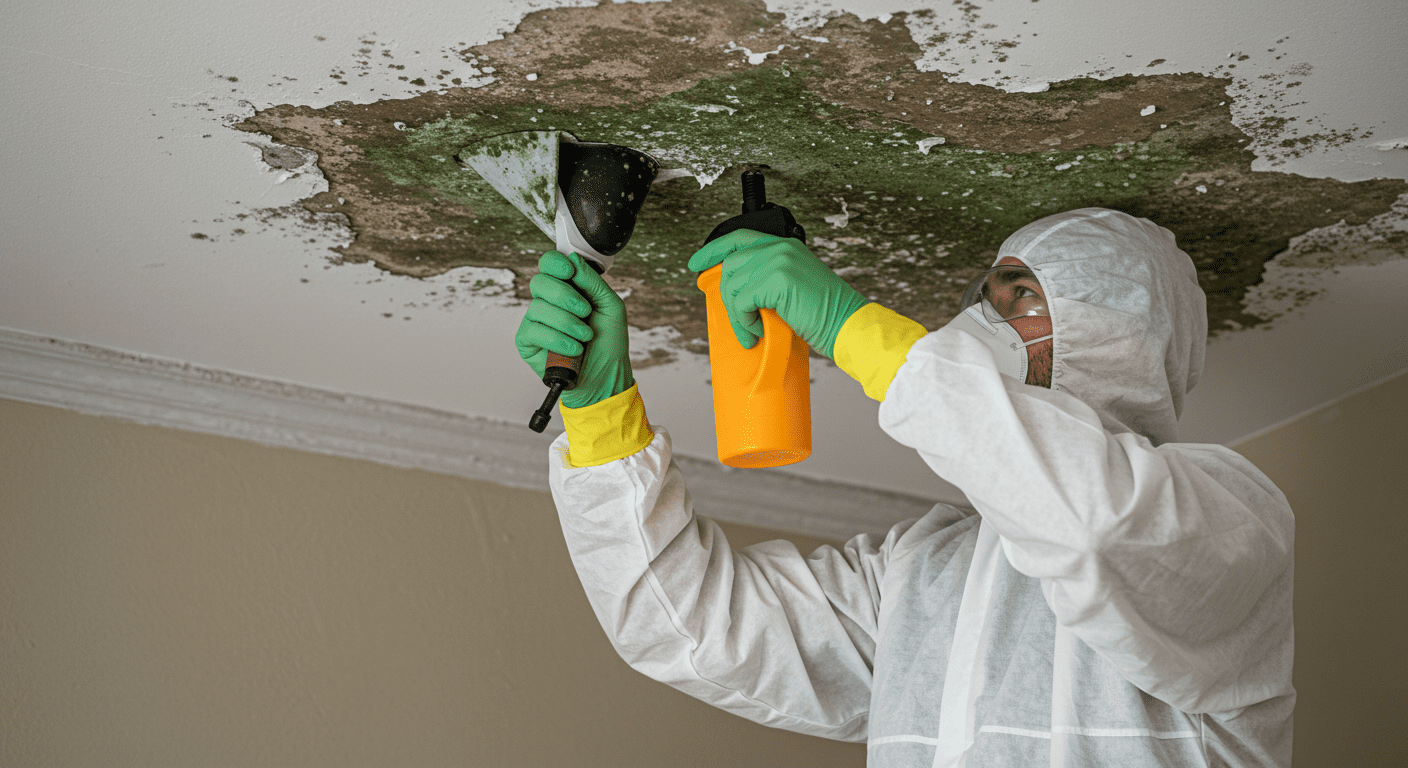
Preventative Measures to Control Moisture
Prevention is the best strategy for dealing with green mold. Controlling moisture levels in your home is key. Use dehumidifiers in damp areas, fix leaks promptly, and ensure proper ventilation in bathrooms and kitchens. Regularly inspecting your home for signs of water damage can also help in early detection and prevention.
For more insights on mold growth and prevention, check out our guide on Understanding Mold Growth in Atlantic City, NJ.
Conclusion
Green mold is more than just an unsightly problem; it’s a potential health hazard that requires immediate attention. By understanding its types, health risks, and effective removal and prevention strategies, you can protect your home and family from its harmful effects. Regular inspections, prompt remediation, and proactive prevention measures are your best defense against green mold. Stay informed and take action to ensure a safe and healthy living environment.
